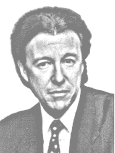| RightTurns.com - Columnists | |
| ARTHUR
BRUZZONE Elusive Independent Voters California's Political Minefield March 15, 2002 |
|
On March 5, 2002, Bill Simon won the California gubernatorial primary, by carrying 51 of the State’s 58 counties. His leading opponent, Former Los Angeles Mayor Dick Riordan carried only two counties; Riordan led Simon for most of the campaign by double digits.
The Riordan and Simon campaigns, especially when it came to the more divisive social issues, reflected the changing partisanship in California — Namely, California voters’ are gradually shifting to ‘declined to state’ status or away from party loyalty, making issues and candidates’ character primary concerns. The last presidential election reflected this same trend.
The reality is that both major parties are dropping in registration. In California, for the first time, declined to state (DTS) voters could choose to vote in either the Republican or Democrat primary.
Unfortunately, Dick Riordan may have jumped the gun. He ran too much and too early as the new non-partisan, independent candidate, leaving behind GOP party loyalists that decide low turnout primaries. Bill Simon ran a traditional grassroots campaign, which appealed to the party faithful. But even Simon kept his eye on non-Republican voters.
Some background. The Democrat and Republican parties in the Golden State are losing registrants. Declined to state or independent voters are increasing in California. This is true especially among the new Latino voters, which are part of the important swing vote in California that decides many races. In fact, Latinos outpaced other groups with more than 30 percent of their new voters registering outside of the two major parties between 1992 and 2000.
As reported by David Lesher in the February 2002 issue of the California Journal, Democrats lost more than 400,000 registered voters statewide between 1992 and 2000. The party now controls only 45 percent of the vote, the lowest since 1932. Republicans dropped below 35 percent, losing about 350,000 voters from their ranks between 1992 and 2000.
Meanwhile, the major party losses are more than offset by a surge in independent registration. Independents, defined in the study as those not registered Republican or Democrat, grew by nearly 900,000 voters during the period.
So how did this new political reality impact the Simon and Riordan races? Both candidates stressed issues --fiscal, energy and economic. But they handled the abortion issue in different ways.
Keep in mind that both Bill Simon and Dick Riordan reside in the same southern California Roman Catholic parish. Both personally oppose abortion, and both stressed as governor they would do nothing to restrict abortions in California. But in style, Simon emphasized his personal pro-life stance; Riordan emphasized women's choice. Simon was better prepared to handle the nearly endless reporters’ questions on this issue, whereas Riordan got bogged down when confronted by the press.
In the end, it also may have been Riordan’s hyper-independence which doomed his campaign. His generous political contributions to Democrats, highlighted by Simon were over the top for even moderates. At the same time, incumbent Governor Gray Davis (D) spent $10 million creating the image of a Los Angeles mayor who is uncertain about his positions especially the abortion question.
Simon, although a political rookie, never ventured far from his key issues. When peppered with reporters’ questions on divisive social issues, Simon demonstrated remarkable talent in turning the question into an opportunity to deliver his fiscal / energy / infrastructure message.
Like Riordan, Simon designed his campaign to feature himself as a problem solver. Still, he always chimed in on the kinds of core conservative issues that get primary votes. Recall candidate George W. Bush’s strategy in the South Carolina primary in 2000.
Whether nationally or in California, candidates and campaign strategists will have to master the ability to contact and motivate the elusive independent voter in order to win elections. Simon now faces his major challenge: To shed his conservative image and appeal to voters well outside the Republican ring, while his opponent, Gray Davis, will spend millions preventing Simon from escaping his Republican affiliation. Davis will also use every means to motivate his Democrat base, appealing to party loyalty.
So the November election will be a battle between a candidate navigating the uncertain waters of independent voters, and a Democrat boss stressing the old party ways, pulling in political chits, and reminding Democrats the benefits of party loyalty.
-
Write to Arthur at bruzzone@rightturns.com
Award-winning TV producer, talk show host, and Republican leader Arthur Bruzzone has written over 150 political articles for national and regional media, and has commented on political issues for American and European television and radio networks. His articles and columns have appeared in the Wall Street Journal, San Francisco Chronicle, San Francisco Examiner, Campaign & Elections Magazine, among other publications.
©
2001, 2002 RightTurns.com
All Rights Reserved
